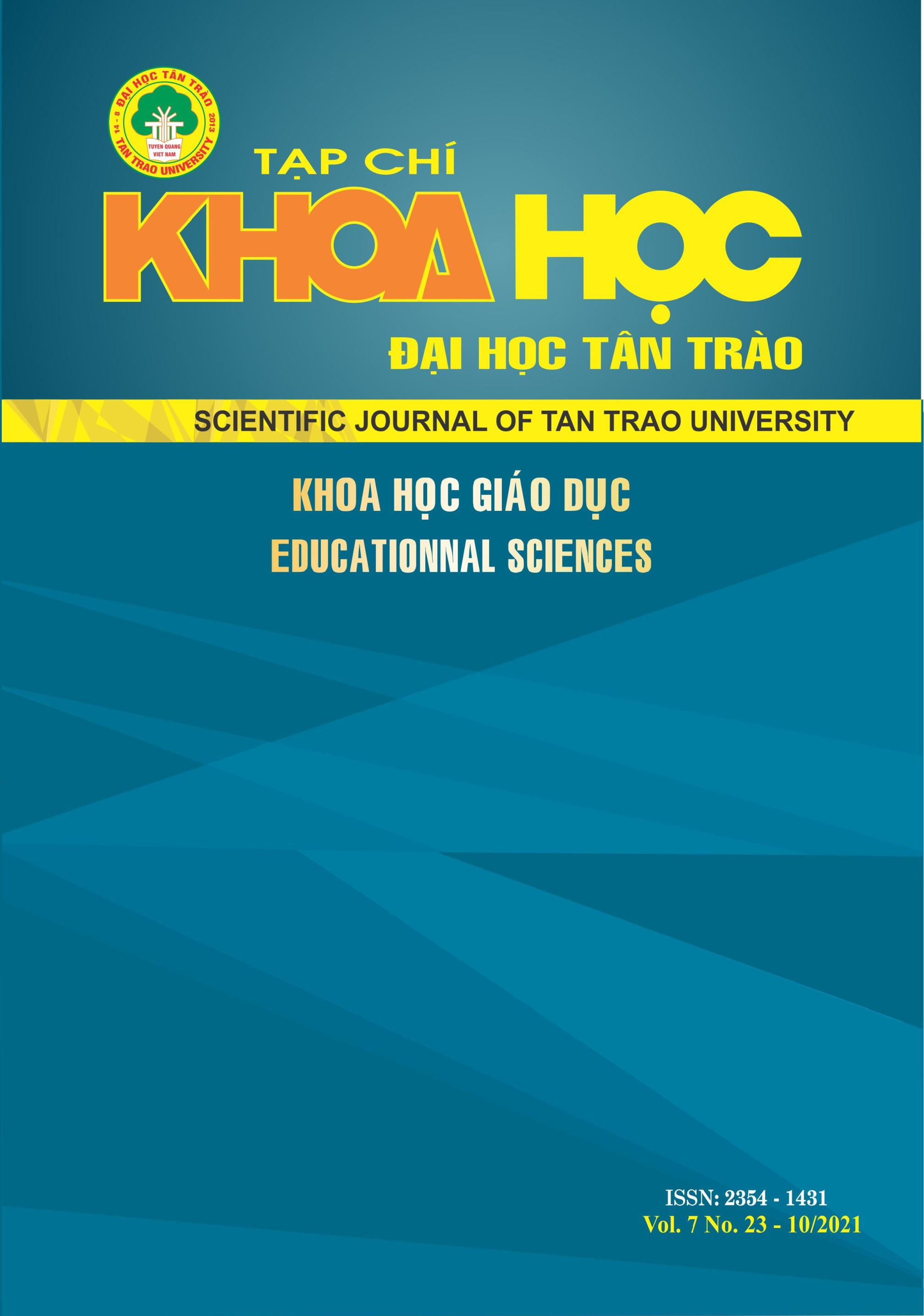MỘT SỐ HƯỚNG PHÂN TÍCH ĐỂ TÌM LỜI GIẢI CHO BÀI TOÁN CHUYỂN ĐỘNG Ở BẬC TIỂU HỌC
DOI:
https://doi.org/10.51453/2354-1431/2021/447Từ khóa:
Chuyển Ä‘á»™ng, quãng Ä‘Æ°á»ng, váºn tốc, thá»i gian, gặp nhauTóm tắt
Trong chương trình Toán lớp 4 và 5, bậc Tiểu học các dạng toán chuyển động thuộc loại toán khó đối với học sinh. Phân tích để tìm lời giải phù hợp đối tượng, đồng thời giúp học sinh phát triển năng lực tư duy là yêu cầu cần thiết của giáo viên. Nội dung bài báo này sẽ giới thiệu một số hướng phân tích để tìm lời giải cho bài toán chuyển động thông qua những vị trí cụ thể.
Tải xuống
Tài liệu tham khảo
[1] Ministry of Education and Training, Grade 4 Math (Volume 1, 2), Vietnam Education Publishing House.
[2] Ministry of Education and Training, Grade 5 Math (Volume 1, 2), Vietnam Education Publishing House.
[3] Hoan, D.D (Editor), Ang, N., Dat, D.T, Tam, P.T. (2020), Math Exercise 4, Vietnam Education Publishing House.
[4] Hoan, D.D (Editor), Ang, N., Dat, D.T, Tam, P.T. (2020), Math Exercise 5, Vietnam Education Publishing House.
[5] Phuong, T., Tan, N.D., Tien, P.X. (2011), Primary Selected Mathematics (Volume 2: Math problems), Vietnam Education Publishing House.
Tải xuống
Đã Xuất bản
Cách trích dẫn
Số
Chuyên mục
Giấy phép

Tác phẩm này được cấp phép theo Giấy phép Quốc tế Creative Commons Attribution-ShareAlike 4.0 .
Bài báo được xuất bản ở Tạp chí Khoa học Đại học Tân Trào được cấp phép theo giấy phép Ghi công - Chia sẻ tương tự 4.0 Quốc tế (CC BY-SA). Theo đó, các tác giả khác có thể sao chép, chuyển đổi hay phân phối lại các bài báo này với mục đích hợp pháp trên mọi phương tiện, với điều kiện họ trích dẫn tác giả, Tạp chí Khoa học Đại học Tân Trào và đường link đến bản quyền; nêu rõ các thay đổi đã thực hiện và các nghiên cứu đăng lại được tiến hành theo cùng một bản quyền.
Bản quyền bài báo thuộc về các tác giả, không hạn chế số lượng. Tạp chí Khoa học Tân Trào được cấp giấy phép không độc quyền để xuất bản bài báo với tư cách nhà xuất bản nguồn, kèm theo quyền thương mại để in các bài báo cung cấp cho các thư viện và cá nhân.
Mặc dù các điều khoản của giấy phép CC BY-SA không dành cho các tác giả (với tư cách là người giữ bản quyền của bài báo, họ không bị hạn chế về quyền hạn), khi gửi bài tới Tạp chí Khoa học Đại học Tân Trào, tác giả cần đáp ứng quyền của độc giả, và cần cấp quyền cho bên thứ 3 sử dụng bài báo của họ trong phạm vi của giấy phép.






